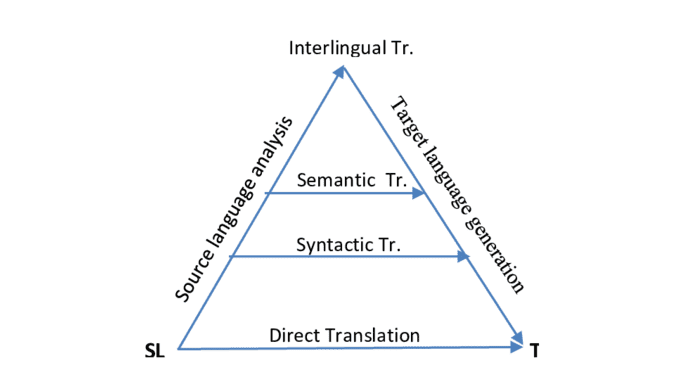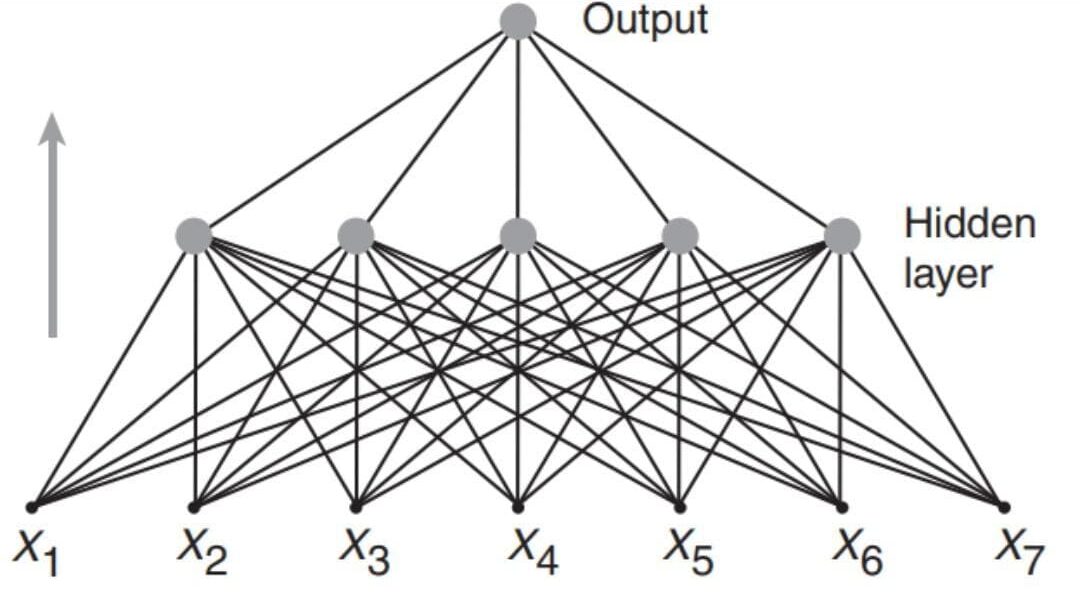Automatic, instant translation from one language to another used to be a gimmick of science fiction flicks. Today, machine learning has eaten its way into nearly every industry and has currently taken over language translation worldwide. This has turned what used to be a distant dream into an imperfect, but extremely useful tool.
Machine translation is the process of using artificial intelligence to automatically translate text or speech from one language to another without human contribution. While this sounds conceptually straightforward, it’s anything but. It requires complicated algorithms, large processing power, and mastery of language theory.
Deep learning has transformed multiple fields in recent years, ranging from biomedical science to marketing, and the MT field seems to have followed suit. In this article, we discuss machine translation, its inner workings, and its current value to individuals and businesses.

Sophisticated processes go into creating even the most basic translations. When people think of automatic translation, they imagine a direct replacement of words from the source language by their equivalent in the target language. However, not all words in one language have equivalent words in another, and many words have more than one meaning. That aside, words carry an undercurrent of implications that don’t scale into another language without a complete loss of meaning.
Anyone in the linguistics field will tell you that translation is always an approximation. Human translators have to make choices, and different translators make different choices based on their own understanding and bias, with the aim to retain both the accuracy and fluency of the source language. Computers also have to make these choices. Since language translation is burdened by so many decisions that are hard to formalize, systems have been developed to tackle that problem.
The rule-based machine translation system was the first to be used commercially. The use of language is governed by certain rules. The premise of RBMT is that if you understand, map and compute the linguistic rules of two languages, you can translate one from the other. These rules can be edited and refined to improve the translation.
An RBMT system analyses the morphological, syntactic, and semantic components of the input sentence (in the source language) and generates an output sentence (in the target language) based on the results of that analysis.

RBMT engines don’t require a large and structured set of shared texts to create the system. However, they require a huge amount of human effort to prepare the rules and linguistic resources. Error correction is very straightforward, as you can easily debug the system to see exactly where and why error occurs during the translation process.
It can also demand significant amounts of human post-editing. It offers some value in situations where a superficial understanding of meaning is needed, but the lack of outcome fluency gives it an unnatural feel that makes it unsuitable for some content.
Statistical machine translation (SMT)
Words have a very lopsided distribution in language. Some are encountered all the time, while many hardly occur. Statistical MT extrapolates the numerical relationship between words, phrases, and sentences in both the source and target language. and uses this model to convert the elements of one language to the other. Some engines combine statistical and rule-based systems in one, known as hybrid MT.
Bilingual corpora are collections of text paired in parallel with a translation into another language. Statistical models are built by a machine learning algorithm that analyses bilingual corpora and target language corpora using probability and information theory. These statistical models are used to generate translations of source content, using precalculated statistical weights to decide the most likely translation.

Most modern SMT systems focus on phrases instead of individual words. By translating whole sequences of words, it can decide the most likely context a word is being used. Since it records phrase translations with its frequency of occurrence, it can accommodate a little ambiguity.
For example, the German word “pony” may mean a fringe hairstyle but may also mean a small farm horse. A model can decide between both by the frequency of occurrence of each with other words in the sentence. The occurrence of the German word “Bauernhof” would increase the likelihood of a farm horse, while the occurrence of the term “Friseursalon” increases the likelihood of a hairstyle.
Deep neural networks have become the dominant paradigm, bringing with them answers to translation problems. NMT uses artificial intelligence to learn languages and, like the neural networks in the human brain, tries to constantly improve that knowledge.
A neural network is a machine learning technique that takes in input data (source language), trains itself to recognize the patterns within the data, and then uses these patterns to predict outputs for a new set of data which is similar in nature to the input data (target language). We discuss neural networks in more detail in another article.
Weight value is assigned to the output of each feature related to their importance in contributing to better translations. Neural networks are trained by processing training examples, one at a time, and updating weights each time, with each update aiming towards a smaller error.

Neural MT is more expensive to train but offers quality unrivaled by the other systems. It is fast, translating millions of words almost instantly, improving its translations with every cycle. MT can handle high-volume translations at speed, and can also work with content management systems to organize and tag that content.
Relying on the large volume of training data and phenomenal computing power, neural MT (NMT) models can analyze information available anywhere in the source sentence and automatically “learn” which feature is useful and at what stage.
It is more accurate, flexible, and easier to add languages. Neural MT is fast becoming the default in MT engine development.
When can machine translation be used?
So just how useful is machine translation currently? Well, it’s hard to measure and even harder to predict. It largely depends on what you want out of it. If you need large volumes of content translated, machine translation is a fast and cost-effective way to get that done. Machine translation is more suitable for well-structured official content such as legal documents or user manuals, but less so for a poem or song.
Machine translation has an edge over human translation due to its speed and cost. With computers, the translation is instantaneous, at less than a third of the cost. However, colloquial content like marketing and branding, or other customer-facing content may seem stiff and awkward. MT may be used, but the results will need some human editing to ensure they are properly localized.
Machine translation does not have to be perfect to be useful, as even crummy translations, machine or not, have their utility. Some companies prefer to integrate their translation process by using MT for initial workup, then human editors to smoothen it out.
Are you looking for ways to achieve new efficiencies and remove bottlenecks from your translation process? Used correctly, machine translation expedites your process without compromising on the quality of the output content.
The usefulness of machine translation technology rises with the quality of its data. All machine translation systems demand copious amounts of high-quality data at every step. That amount of data is difficult for an individual or small/medium-sized company to collect while maintaining high quality. It doesn’t stop at collection either. Data preprocessing is made up of laborious processes that require optimal accuracy. Therefore, it is often more ideal to find a service to do it for you.
Here at DATUMO™, we crowdsource our tasks to diverse users located globally to provide accurate, ready-to-use data. Moreover, our in-house managers double-check the quality and quantity of the collected or processed data, to ensure a smooth, error-free translation process.


